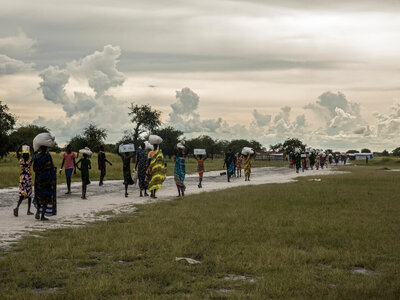Emergency and transition programming
- 103 million
- people reached by WFP through emergency assistance in 2023
- 19 million
- women and children supported by WFP malnutrition prevention and treatment programmes in 15 emergencies in 2023
- 58 countries
- supported by WFP in improving their emergency preparedness and response systems in 2023
Humanitarian work is increasingly multilayered and complex, with a combination of conflict and recurrent climatic events affecting most humanitarian crises. This demand on WFP requires the organization to critically understand the operational contexts of where we operate, and ensure that the voices of those we serve are at the centre of everything we do.
Our Emergencies and Transitions team in Headquarters ensures that WFP country offices have the appropriate policies, guidance, tools and training to launch programmes that meet the needs of those we serve.
Key areas of emergency and transition programming
-
Accountability to affected populations
-
WFP is first and foremost accountable to the people we serve, and in order to do this, we must ensure that the decision-making process is meaningful and engaging. This means people receiving appropriate and prompt information, so they can make informed decisions and have access to multiple safe and effective mechanisms to provide feedback. This in turn means that WFP can continuously adapt its programming.
-
Protection
-
Conflict and hunger
-
Humanitarian principles and access
-
Programming in urban settings
-
Population displacement







